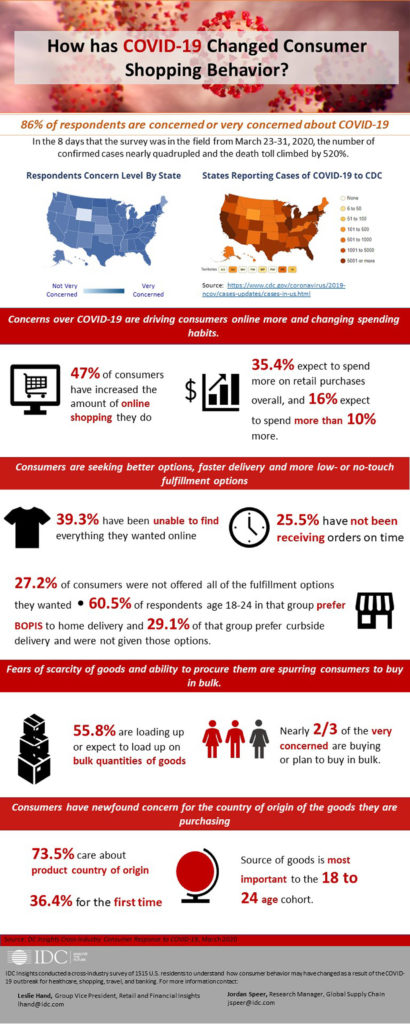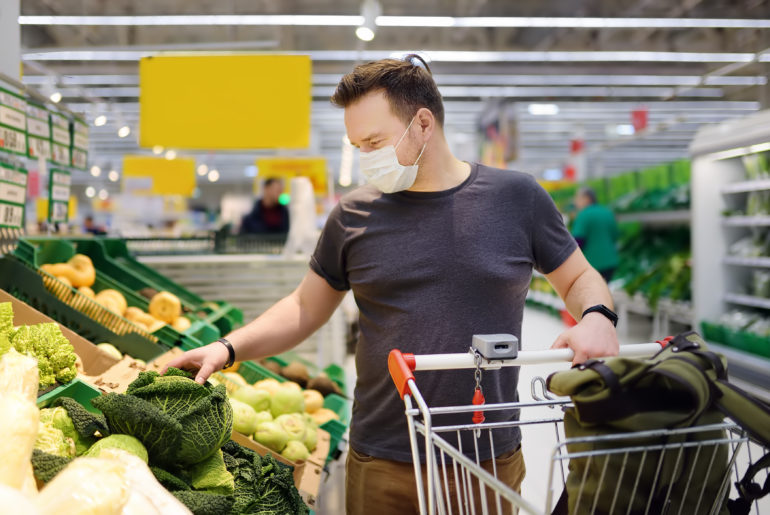IDC Insights recently conducted a cross-industry survey to understand how consumer behavior is changing as a result of the COVID-19 outbreak in areas of healthcare, shopping, travel, and banking. The survey was in the field from March 23-31 and included 1515 respondents. The infograph below illustrates a few of the highlights relative to how consumers are changing their shopping habits as a result of the pandemic.
IDC asked consumers about changes to their online shopping patterns and retail spending plans. The survey also asked about their recent online experiences vis-à-vis finding what they want online, receiving the fulfillment options they prefer, and whether they were experiencing technology problems. The survey also inquired about bulk shopping (it’s not just toilet paper flying off the shelves) and about consumer concern regarding product country of origin.

How Retailers Can Adapt to COVID-19 Shopping Behavior
Based on the results, IDC recommends the following for retailers:
- Consumers, sheltering in place, have quickly ramped up their online shopping. According to the survey, online shopping is up by 47%, with a significant percentage expecting to spend more on retail because of COVID-19 concerns, yet some consumers are having trouble finding what they want online. If not doing so already, retailers should ensure that they have order management and inventory systems in place to quickly expose all of their products online.
- Fears of scarcity as well as the ability to acquire goods are likely what’s behind a significant increase in bulk buying. Retailers should pay close attention to demand signals (while realizing that shifts are occurring quickly during this unusual period), seek out new sources of supply if necessary, to ensure that they have enough supply to meet demand, and ensure that they have the necessary technology and processes in place to speed and streamline delivery of goods to consumers.
- Retailers need to ramp up their BOPIS and curbside delivery fulfillment options and the technology and processes that support them. Consumers are seeking no- and low-touch alternatives to e-commerce home delivery. In exposing inventory to consumers online, retailers should also allow them visibility into all of the fulfillment time and place options for each item. Offering fulfillment options is a crucial component of satisfying the customer and building brand loyalty at any time, but particularly during this pandemic.
- Something to think about: consider where you are sourcing your goods. There’s been a sharp rise in the level of importance that consumers are assigning to country source of origin. This may have a long-term impact on future shopping habits.
The coronavirus (COVID-19) pandemic is impacting the global economy at nearly every level. Anticipate market challenges and keep business moving with IDC’s extensive COVID-19 research and advice.




